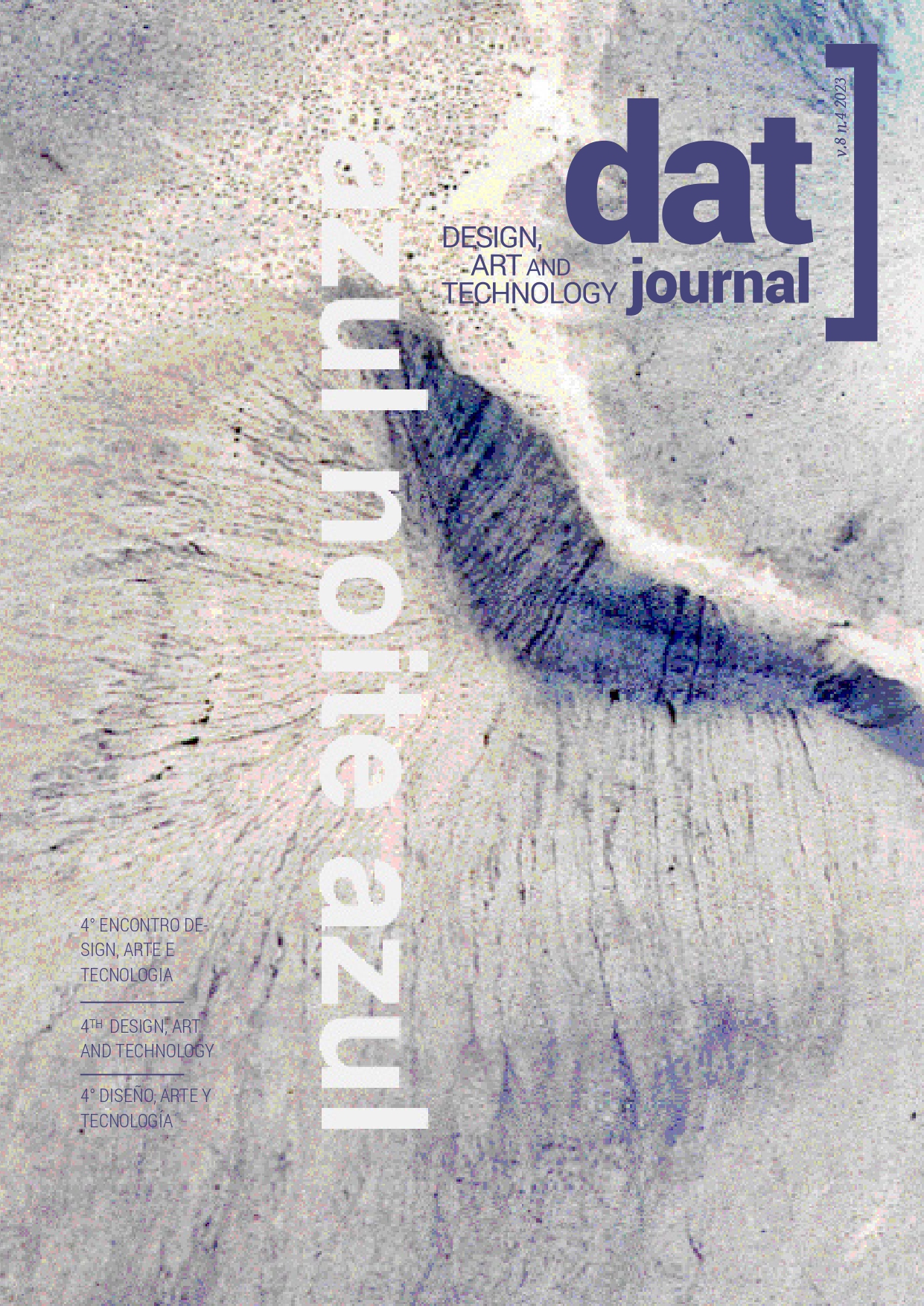Development of a playful artifact to raise awareness of the social inclusion of children using wheelchairs
DOI:
https://doi.org/10.29147/datjournal.v8i4.733Keywords:
Design, Social inclusion, Behavior change, Wheelchair usersAbstract
The wheelchair is the assistive technology most used by people with motor disabilities. However, prejudice attitudes against these people persist in society. Thus, this research aims to develop a ludic artifact, in order to raise awareness among children who do not have motor disabilities, for the social inclusion of children who use wheelchairs. For the development of the solution, a structured project methodology was used, based on design precepts. Based on data collection, a booklet was designed with interactive elements, with characters and ludic tools aimed at the children's audience. It is expected to minimize the negative social and behavioral repercussions on wheelchair users.
Downloads
References
BARBOSA, R. F. M.; GOMES, C. F. Brincadeira e desenho animado: a linguagem lúdica da criança contemporânea. In: X CONGRESSO NACIONAL DE EDUCAÇÃO – EDUCERE; I SEMINÁRIO INTERNACIONAL DE REPRESENTAÇÕES SOCIAIS, SUBJETIVAS E EDUCAÇÃO - SIRSSE. 10., 2011, Curitiba. Anais [...]. Curitiba, PR: PUCPR, 2011. p. 16655-16669.
BAXTER, M. Projeto de Produto: guia prático para o design de novos produtos. 2. ed. São Paulo: Edgard Blucher, 2000.
BONSIEPE, G. Design como prática de projeto. São Paulo: Edgard Blucher, 2012.
BRASIL. Ministério da Educação. Secretaria de Educação Especial. Departamento de Política da Educação Especial. A inclusão escolar de alunos com necessidades educacionais especiais: deficiência física. Brasília, DF: Ministério da Educação, 2006.
BRASIL. Subsecretaria Nacional de Promoção dos Direitos da Pessoa com Deficiência. Comitê de Ajudas Técnicas. Tecnologia Assistiva. Brasília, DF: CORDE, 2009. 138 p.
KUMAR, V. 101 Design Methods: a structured approach for driving innovation in your organization. Nova Jersey: John Wiley & Sons Inc., 2013.
ORGANIZAÇÃO MUNDIAL DA SAÚDE – OMS. Relatório Mundial sobre a Deficiência. São Paulo, SP: The World Bank; SEDPcD, 2011. Disponível em: http://apps.who.int/iris/bitstream/handle/10665/44575/9788564047020_por.pdf;jses. Acesso em: 20 out. 2022.
PIAGET, J. Seis estudos de psicologia. 24. ed. Rio de Janeiro, RJ: Forense Universitária, 2007.
PRODANOV, C. C.; FREITAS, E. C. Metodologia do trabalho científico: métodos e técnicas da pesquisa e do trabalho acadêmico. 2. ed. Novo Hamburgo, RS: Editora Feevale, 2013.
SANTOS, F. A. N. V. Método aberto de projeto para o uso no ensino do design industrial. Revista Design em Foco, v. 3, n. 1, p. 33-49, 2006. Disponível em: https://www.redalyc.org/pdf/661/66130104.pdf. Acesso em: 20 out. 2022.
VASQUEZ, M. M. et al. Cadeira de Rodas e Estigma: um estudo preliminar da percepção visual de não-usuários. HFD Revista, v. 5, n. 10, p. 03-16, 2016. Disponível em: http://www.revistas.udesc.br/index.php/hfd/article/view/8847. Acesso em: 03 ago. 2022. DOI: https://doi.org/10.5965/2316796305102016003
WENDEL, S. Designing for behavior change: apllying psychology and behavioral economics. Sebastopol, CA: O’Reilly Media, 2014.
WERNECK, C. Ninguém mais vai ser bonzinho, na sociedade inclusiva. 2. ed. Rio de Janeiro, RJ: WVA, 2000.
Downloads
Published
How to Cite
Issue
Section
License
Copyright (c) 2023 DAT Journal

This work is licensed under a Creative Commons Attribution 4.0 International License.


























